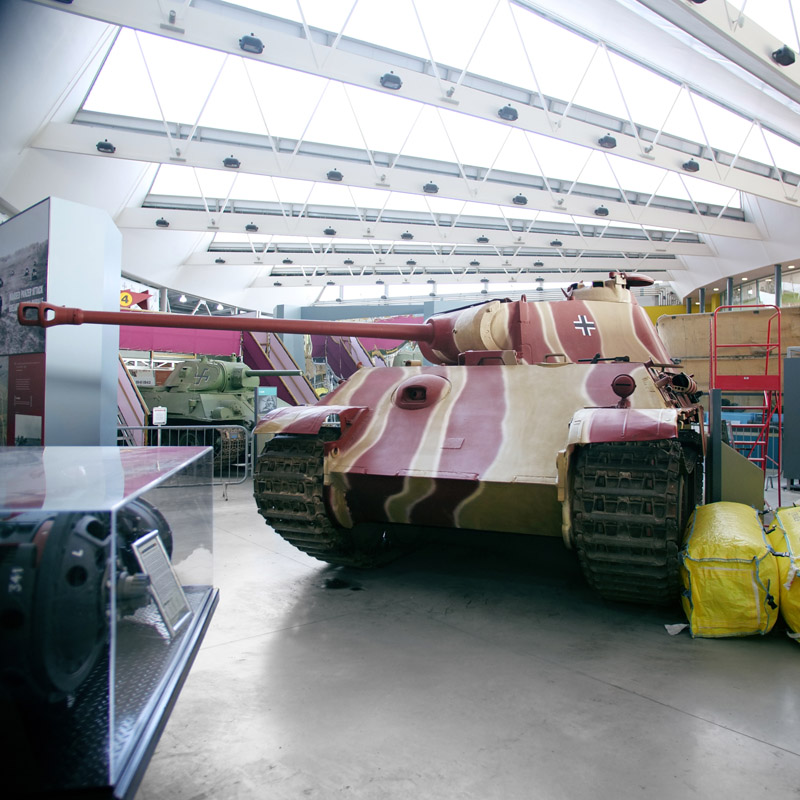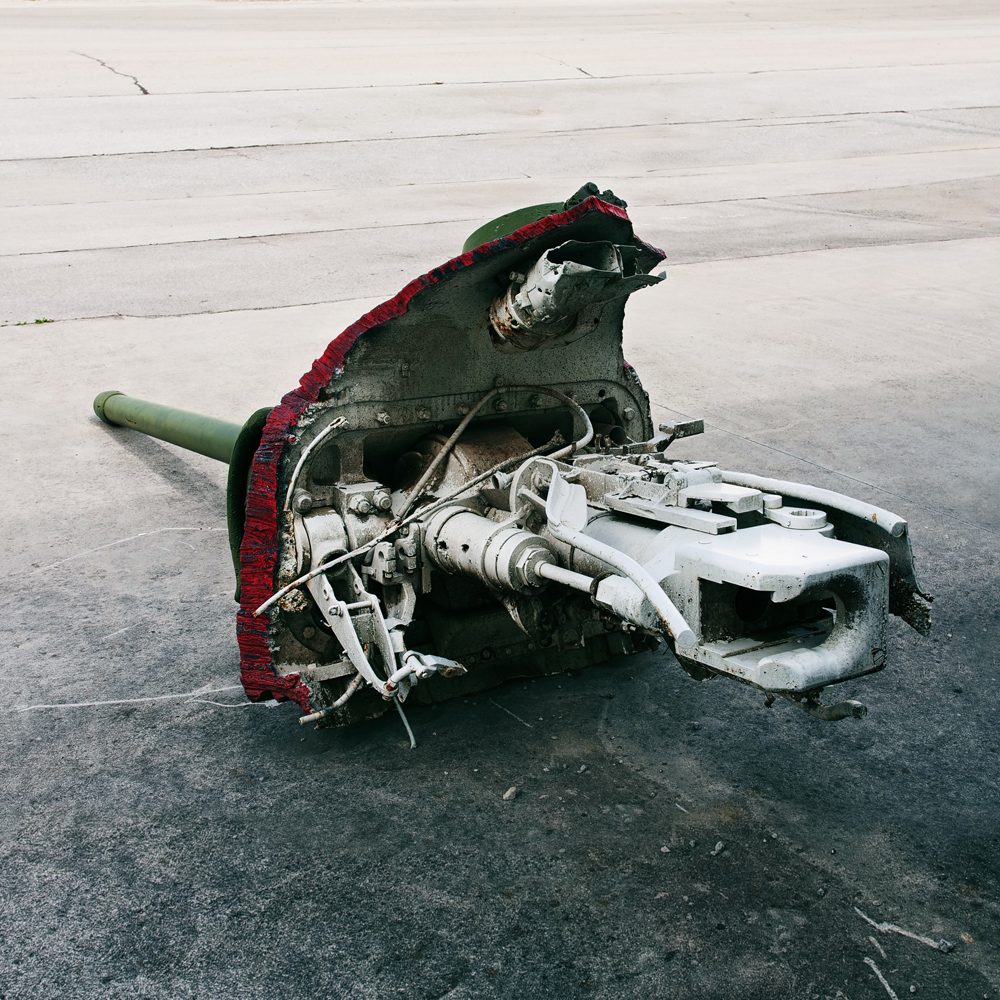Type: Medium Tank
Nation: Germany
Period: World War 2
Location: The Tank Museum, Bovington, UK

The cost of war
The Panther was a much larger and more modern machine than the Panzer IV, but at a price of 144,000 Reichsmark it cost only 30,000 more to build – while a Tiger I went for more than twice as much. Nazi Germany was planning to equip large parts of their army with Panthers, but in reality resources were becoming more and more scarce, the Allied bombing campaign was constantly disrupting production and German arms manufacturing industry was relying heavily on slave labour. As the workers were forced to work under appalling conditions and many died in the process, it is not surprising that there have been many documented cases of factory sabotage on Panthers and other German vehicles.

Almost sidelined
While the Panther’s frontal protection was superb, the sides and rear had to be relatively thin to keep the weight down. Many Panthers were destroyed because even the widely common Soviet 14.5 mm anti-tank rifle could penetrate the sides. Even before the first Panthers had rolled into combat in July 1943 there had been plans for a Panther II, which not only would share components with the Tiger II to standardise production, but also have 60 mm of side armour – 20 mm more than on the Panther. But when the Germans found out that the anti-tank rifle bullets could be defeated by spaced armour, they installed „Schürzen“ side skirts on their vehicles and dropped the Panther II project. Only one Panther II hull with a Panther Ausf. G turret remains at the U.S. Army National Armor & Cavalry Collection at Fort Benning, Georgia.

F is for Failure
Following the Panther‘s Ausf. D, Ausf. A and Ausf. G production models, an upgraded Ausf. F with a completely redesigned „Schmalturm“ turret was planned for June 1945. But when the war in Europe came to an end by early May, only a few F hulls had been finished. Some of the Ausf. F Panthers from the Daimler-Benz factory in Berlin-Marienfelde were actually taking part in the desperate final defence of the city, but these were equipped with Ausf. G turrets. The Tank Museum has a Schmalturm in its collection, which at some point was used as a hard target by the British Army.

The last Panthers
Right after the end of World War 2, the Red Army ordered a few Panthers to be assembled for testing purposes from parts captured at the Daimler-Benz factory in Berlin-Marienfelde. Similarly, the British Army’s Royal Electrical & Mechanical Engineers (REME) supervised production of nine Panthers and twelve Jagdpanthers utilising German factory workers at MNH (Maschinenfabrik Niedersachsen Hannover) in 1945/46. The Tank Museum‘s Ausf. G was part of this post-war production batch and is therefore one of the very last Panthers ever to be built. Together with the other vehicles it was sent to the UK for trials before it was eventually put on display at the museum. Interestingly, it is featuring the late “Flammenvernichter” exhaust covers which had been introduced on the Ausf. G in October 1944. These were supposed to hide the glowing red exhaust pipes by night.


